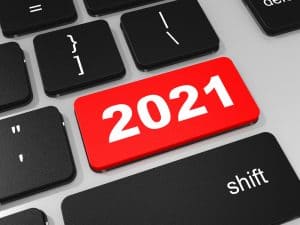
Real-time technologies, methodologies, and solutions adopted in 2020 will enable business success and innovations in 2021.
The value of real-time systems came into focus in 2020 as companies responded to the disruptions due to COVID-19. Having to make quick adjustments drove the need for timely insights into fast-changing conditions. As a result, the year saw new attention paid to real-time systems and the underlying technologies that make them possible.
Many of the changes and technologies adopted will be critical to success this year. So, looking back at how businesses addressed their pressing issues in 2020 with real-time technologies is really a look ahead into the methods and solutions that will enable business success and innovations in 2021. Here is a brief overview of the technologies and trends to keep an eye out for in 2021:
Programming languages for real-time applications
Debates about which programming language is best for a particular application are legendary. Developers have strong opinions, and some languages have ardent users. Three of our most viewed articles of the year dealt with this issue. Proponents of Golang, Python, and R, three of the commonly used languages used for real-time applications, weighed in.
Related articles:
- Why Golang and Not Python? Which Language is Perfect for AI?
- Why Python is Essential for Data Analysis
- R and Python: Critical Programming Languages to Begin Your Data Science Career
Development methodologies
No matter which programming language is used, businesses had to find a way to develop applications quickly to meet the changes brought on by COVID’s disruption. Attention turned to development methodologies that considered speed to market, developer resources, and the need to maintain applications over their entire lifetime. As a result, DevOps and low-code/no-code programming played an increasingly important role as businesses needed to rapidly develop, deploy, and update applications to keep pace with ever-changing customer demands and market turbulence.
Related articles:
- 5 DevOps Trends That Demand Your Attention
- Time to Market is Everything – Make it Happen with DataOps
Architectural considerations for real-time applications
Many businesses in 2020 embraced cloud-native, microservices approaches to real-time application development and deployment. The reason: Microservices help developers deliver new features more quickly and effectively than ever before to keep giving users what they demand. Such models use containers, which offer a way for processes and applications to be bundled and run. They can be used throughout an application’s lifecycle, and they allow large applications to be broken into smaller components and presented to other applications as microservices. The result is an explosion in the number of containers to manage, maintain, and scale over time. Enter Kubernetes. Kubernetes became the dominant solution for container orchestration in 2020 and will remain so in 2021.
Related articles:
- What Is Cloud-Native and Why Does it Matter for CI?
- How Kubernetes and Containers Enable Highly Scalable CI Applications
- 4 Things to Know About Using Kubernetes for AI
Notable application areas
Intelligent edge: Last year saw a perfect storm for the intelligent edge. The combination of new connectivity services (particularly 5G), real-time analytics, the Internet of Things (IoT), and new compute power (embedded and hardened systems, new GPUs, and more) brought intelligent edge into the mainstream. Specifically, the edge expanded into a greater and even more dominant part of the computing infrastructure equation. The result: significant changes in the way information is shared and managed in devices, sensors, and systems across the globe.
Related articles:
- Understanding Edge Computing and Why It’s So Important
- Edge Computing Critical for Enhanced Customer Experience
- Using AI and ML to Extract Actionable Insights in Edge Applications
Digital twins: Digital twins are finding broader use and playing a more important role in innovation. Driving the demand and interest in digital twins is the wealth of data available from smart sensors and IoT devices. Such data creates an opportunity to perform intelligent real-time monitoring to dramatically improve responsiveness and situational awareness. Applications of digital twin technology are wide-ranging, including everything from a jet engine, a human heart, and an entire city. All these entities can have a digital twin that mirrors the same physical and biological properties as the real thing.
Related articles:
- Digital Twins’ Role in an Ever-increasing Remote Workforce
- Digital Twin Market to See Tenfold Growth in Next 5 Years
- Empowering Digital Twins with Streaming Analytics
Safe return to work: As companies begin to envision a new normal, important office and real estate decisions must be considered so employees can return to work safely. What’s needed is an accurate and real-time picture of company data. In the post-pandemic new normal, AI-driven intelligence will enable company management to dynamically assess the operational costs, security risks, and productivity trade-offs associated with having employees return to work in their offices.
Related articles:






























